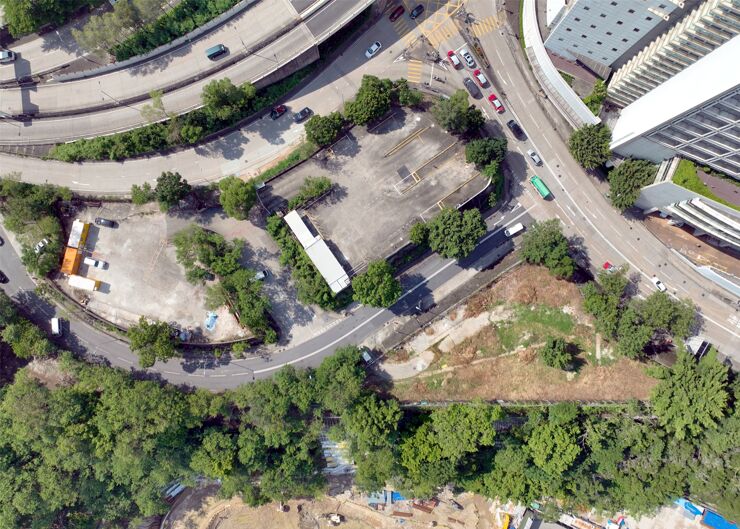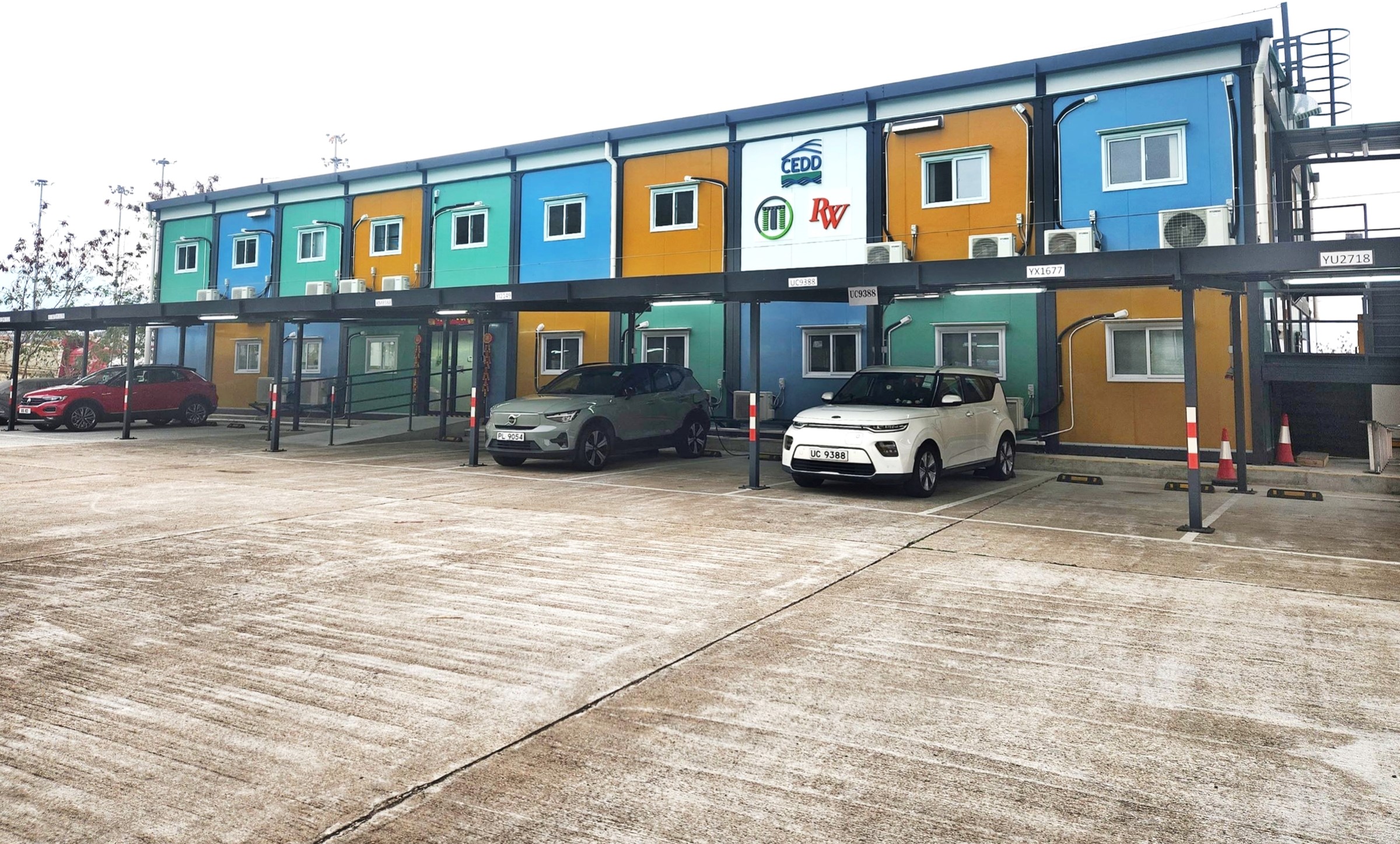
The NEC requirement for parties to act in a ‘spirit of mutual trust and co-operation’ has resulted in a residential site formation project in Hong Kong starting a year earlier than planned. It is also likely to be completed six months ahead of programme and more than 10% under budget.
The Civil Engineering and Development Department (CEDD) of the Government of the Hong Kong Special Administrative Region in China let the HK$220 million (£23 million) project to Richwell Engineering Limited under an NEC4 Engineering and Construction Contract (ECC) Option B (price contract with bill of quantities). CEDD South Development Office is the NEC project manager and Mannings (Asia) Consultants Limited is the NEC project manager’s delegate, NEC supervisor and designer.
The work involves preparing a former driving test centre site and adjacent open space for the government’s Housing Department (HD) to build 1,000 flats for 2,700 people. In addition to relocating the existing test centre, the scheme includes building retaining walls and slopes, improving Chak On Road South and the junction of Nam Cheong Street and Lung Yuet Road, diverting a 1.8 m diameter water main and undertaking ancillary drainage, sewerage, waterworks and landscaping.
Originally due to start in 2024, work started on site in June 2023 with a completion date of September 2026 and could now be completed as early as March 2026.
Rapid relocation enables year-early start
Mannings director Simon Ng says the project team established strong collaboration at the outset with key stakeholders. ‘The team acted from the very beginning in the NEC “spirit of mutual trust and co-operation” in taking forward the project with a common goal for early completion and cost savings with professional skill.’
He says a key initial challenge was relocating the major Transport Department (TD) driving test centre, which handles over 10,000 driving tests a year. ‘TD had to give one year’s notice to candidates of the location of its new centre so they could practice the examination routes, and the new centre had to be ready prior to decommissioning the existing one.’
Ng says instead carrying out the relocation during the works contract, the project team proactively discussed different options in the early design stage with TD, relevant enabling departments and the community with a view to advancing the relocation. ‘The project team successfully gained support from the community to modify a small piece of land in a green belt area at Pak Wan Street for providing a temporary centre to conduct road tests, and we managed to convince TD to reallocate parking tests to other existing centres.’
 He says in the design of temporary test centre, the project team adopted modular integrated construction (MiC) and worked closely with TD to incorporate all essential user requirements into the dedicated modules. ‘The project team also arranged to carry out off-site fabrication of the modules and on-site installation of the temporary test centre through an advance contract, while conducting the design of the site formation and infrastructure works for the housing site in parallel.’
He says in the design of temporary test centre, the project team adopted modular integrated construction (MiC) and worked closely with TD to incorporate all essential user requirements into the dedicated modules. ‘The project team also arranged to carry out off-site fabrication of the modules and on-site installation of the temporary test centre through an advance contract, while conducting the design of the site formation and infrastructure works for the housing site in parallel.’
Ng says as a result, the project team successfully brought forward the commissioning of temporary driving test centre. ‘This allowed earlier decommissioning of the existing test centre, which enabled us to proceed with site formation works a full year earlier than planned.’
Effective management of early warnings
He says to facilitate fast and effective communications among the project team, an MiC site office was designed for joint use. ‘The colour design of the site office, with a combination of white, blue, green and orange that represented the client, project manager, supervisor and contractor respectively, symbolised a spirit of joint commitment, collaboration and mutual trust within the project team.’
Ng says the project team also performed excellently in risk reduction and upheld openness in handling NEC early warnings. ‘These are very powerful tools in NEC contracts to promote collaboration as well as avoiding unnecessary disruption to the works.’
He says as a result of maintaining collaborative approaches, the project team managed to swiftly align on mitigation measures against various potential risks, and clear uncertainties on works scope and site information once identified. ‘The number of early warnings also significantly dropped, from 49 in month 4 to just 2 in month 19.’
For example, Ng says as soon as construction started, the contractor pointed out in an early warning meeting that the site area was very limited and would greatly restrain the manoeuvrability of dump trucks and scope for mobilising more construction plant to increase work fronts within the site. ‘As Chak On Road South running through the site was mostly used by public vehicles for driving practice and by Water Supplies Department (WSD) and Drainage Services Department (DSD) maintenance vehicles to access their nearby depots, the contractor proposed full closure of the road for temporary use as a works area during construction, while allowing access for pedestrians and maintenance vehicles.’
He says the project team recognised the significant merits of the proposal and swiftly reached a consensus. ‘The team mobilised joint efforts to lobby for, and successfully secure, support and consent from various stakeholders and authorities, including WSD, DSD, TD, Police, local community groups and so on to the proposal within just a couple of weeks. As a result of the road closure, the progress of works was very smooth and significantly ahead of schedule.’
Managing water main diversion and burst risks
Ng says another major challenge was the diversion of a section of 1.8 m diameter fresh water main cutting through the middle of the site. ‘It is a main water supply to the Sham Shui Po and Mong Kok districts serving some 330,000 people.’
He says the project team took the initiative to liaise with WSD at the early stages to identify construction risks associated with the mains diversion works and draw up appropriate mitigation measures. ‘To this end, the project team proactively and collaboratively worked with HD and WSD to explore different options for diversion, handover of the formed site to HD in phases and redistribution of water supply zones during connection works so as to eliminate potential risks of water suspension.’
Ng says as a result all identified risks were properly avoided, reduced or accepted with suitable mitigation measures to ensure timely handover of the formed site to HD for proceeding with the building works. ‘Also, during construction the project team continues to work with WSD to monitor ground movement around the water main and to detect any minor leakage before it develops into a pipe burst. This will also help to preserve water in line with the principle of sustainable water resources management.’
Promoting innovation and productivity
He says the project team encourages innovation and productivity wherever possible. ‘During construction, innovation and new technology are considered and regular meetings between the project manager, supervisor and contractor are carried out to explore any suitable innovation and new technology for trial or use in the project.’
For instance, Ng says as a pilot for the local construction industry, an excavation guidance system has been adopted and installed on an excavator to enhance construction safety, avoid damage to underground utilities and minimise over-excavation during site formation works. ‘The system is a three-dimensional real-time monitoring system with sensors at the bucket, stick, boom and excavator platform to provide guidance to the excavator operator during soil and rock excavation.’
Remarkable achievements
He concludes that by practising the ‘spirit of mutual trust and co-operation’ enshrined in the NEC contract, the project team has achieved remarkable results so far, including an advanced start of the main contract by about a year. ‘In addition, the progress of works has also been very good, being about 1.5 months ahead of schedule in the first 10 months of site works.’
Ng says moving ahead, the project team is striving for a more ambitious achievement of bringing forward the construction completion by a further 6 months, which would serve to reduce the project cost by about HK$24 million (£2.4 million). ‘What is equally encouraging is that since the early start of the works contract in June 2023, the project team has achieved zero site accidents and received no public complaints.
‘All in all, the successful NEC-inspired collaboration among all parties has enhanced site safety, expedited the construction programme and benefited the project in terms of quality of works, cost control, environmental friendliness, technological advancement, constructability and social harmony.’
Project highlight video
Benefits of using NEC
- NEC requirement on the project team to act in a ‘spirit of mutual trust and co-operation’ resulted in strong collaborative approach from the outset.
- NEC-inspired collaboration led to a driving test centre on the site being rapidly relocated to a nearby site, enabling site formation works to start a year earlier than planned.
- Effective use of NEC early warning process at the initial stages is likely to cut six months from the 3-year programme and reduce costs by 11%.




